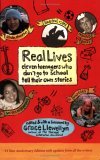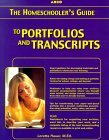 High School Record Keeping
High School Record Keeping

Are
Your School Records Private?
by Amy Cortez - Editor The Eclectic
Telegraph
If you are a student at a private school or a public
school you probably ought to know that your records
are not really yours. This holds true for homeschooled
students in most states in less you take care of this
little detail. A little item called the Family Educational
Rights and Privacy Act (FERPA) allows a school to release
personal informational items such as: your name, address,
telephone number, date and place of birth, honors and
awards, and dates of attendance to pretty much anybody,
including the military...[read
on]
|
 Why Keep Records?
Why Keep Records?
It is important to keep good records of your child's homeschooled
years, especially at the high school level if your student intends
to go to college.
 What kind of records should I
keep?
What kind of records should I
keep?
One
of the things I quickly realized at the high school level, not
only are you the mentor, the chauffeur and the parent, you also
get to be a guidance counselor. Probably the most important
item you'll keep track of at the high school level is something
called a "cum file" or High School Cumulative file.
This file might contain:
| Elements
of a High School Cumulative file |
 |
Homeschool
profile |
 |
"Extra
curricular" resume |
 |
Letters
of recommendation |
 |
Student
profile |
 Homeschool Profile
Homeschool Profile
A description of what your "school" was like. The
general idea of this document is to describe in broad terms
your philosophy on the elements that made up your student(s)
high school experience. Subject. headers in this report might
be: Description (of your homeschooling method), Mission Statement,
External Resources, Community Service, Athletics. There might
also be a letter from his guidance counselor (that's you mom
or dad!) describing transcript or resume issues that may stand
out in an irregular or extraordinary way.
Example
Description of Community Service - "We believe
in participating in the community and in giving back.
You cannot be a member of a society or a citizen without
participating in some capacity as a volunteer. In general,
in our school we volunteer in places and activities that
are interesting and that further our understanding of
a topic or an issue." |
 "Extra curricular" resume
"Extra curricular" resume
A
description of what your student
does when he's not studying "school stuff". The general
idea of this document is to describe the fun, artistic, poetic,
adventurous, generous, athletic aspects of your student. I
divided ours by years. Subject. headers in this report might
be: Live Theater, Film & Museum
Exhibits, Science, History and Geography experiences, Community
Service, Awards, Job History.
 Letters of recommendation are written by coaches,
mentors, team mates, professors people who know your student
through academic, athletic, community service or recreational
pursuits. The letters will describe the uniqueness of your student
and why whomever is reading the letter might be interested in
them.
Letters of recommendation are written by coaches,
mentors, team mates, professors people who know your student
through academic, athletic, community service or recreational
pursuits. The letters will describe the uniqueness of your student
and why whomever is reading the letter might be interested in
them.
 Student
profile is the overall academic picture of your student.
It contains a cumulative transcript and course names/titles
and descriptions. The cumulative transcript
documents: the number of credit hours earned, GPA, footnotes
about where classes were taken if you used resources external
to your homeshool, the standards you used to measure your student's
work.The course names/titles and descriptions document course
names/titles and descriptions of the courses on the transcripts.
Student
profile is the overall academic picture of your student.
It contains a cumulative transcript and course names/titles
and descriptions. The cumulative transcript
documents: the number of credit hours earned, GPA, footnotes
about where classes were taken if you used resources external
to your homeshool, the standards you used to measure your student's
work.The course names/titles and descriptions document course
names/titles and descriptions of the courses on the transcripts.
| Elements
of a Student Profile |
 |
Cumulative
Transcript/portfolio |
 |
Course
names document |
 Transcripts or Portfolio?
Transcripts or Portfolio?
The first thing you have to decide
is is if you will keep transcript or portfolio records. Discuss
this with your student. A portfolio generally consists of descriptions
and examples of the student’s work and accomplishments.
It also includes, programs, articles, photos, letters of recommendation.
As we are are eclectic homeschoolers,
we decided to
keep a kind of hybrid file that contained transcript records
and a portfolio like collection of samples, should we need it.We
decided that this hybrid kind of file would help college admissions
officers to understand the uniqueness of the student applying.
[More
on generating transcripts]
 Course
names and descriptions
Course
names and descriptions
Course
descriptions can be useful in describing what it was that you
did - if that makes sense.
Choose
a brief title or a specific name that will make sense to college
admission officers. The description is a brief summary of what
was actually accomplished by the student to earn the credit
hour and grade points. The description can include the texts
used, we listed these as an attachment the word Lab if the Science
course had a lab element. If your course can be considered"Honors"
or at an AP level, indicate that. NOTE: homeschoolers cannot
say their classes were AP unless they actually took an accredited
AP class. If your homebrewed course was AP-Like to prepare
for a SAT Subject test, say that. If the course was college
level and taken at at community college or other place, indicate
that as well.
The
use of correct terminology is important and the student and
parent should know what each term on the transcript means. For
example, Aerospace is Aerospace, not Physical Science. This
fine tuning shows a special interest.
Attach
these descriptions as the last page of the transcript.

 Example
- A Lab Course name and description: Example
- A Lab Course name and description:
Introduction
to Aerospace Engineering and Design (LAB)
Three areas of Aerospace are explored in conjunction
with two Lighter Than Air(LTA) vehicle construction
projects. The three areas are, Basic Engineering, Drawing
structures (with an emphasis on drafting aircraft) and
Aircraft Structural Analysis. The LTA vehicles are created
using physics, mathematics, and chemistry known to the
student with the emphasis being on the application of
this knowledge to Aerospace Engineering and design rather
than on exposure to new science and mathematics. This
class also introduces basic design drawing through a
series of drawing exercises. The Aircraft structural
analysis is a surface exploration with exposure to basic
elasticity, energy methods of structural analysis, structural
instability in aircraft structures. It includes reading
on Aircraft structures, air worthiness and Aeroelasticity.
Additionally, NASA FoilSim software will be utilized
to make the connections between theory and practice.
 Example
- An AP-Like Course name and description: Example
- An AP-Like Course name and description:
Physics
I - 101 & 102
A Combination of Classical Mechanics and Electricity
and Magnetism presented by MIT through Open Courseware.
Intended to model an AP course to prepare
the student for SAT Physics Subject test(s). (A detailed
description of Classical Mechanics and Electricity and
Magnetism followed)
 Example
- Honors course taken at a remote source name and description: Example
- Honors course taken at a remote source name and description:
Latin
I Honors
Emphasizes grammar and vocabulary as keys to understanding
and appreciating Latin. Students read works based on
mythological themes and adaptations from primordial
authors.This course is an introduction to the Latin
language, with special attention paid to Latin grammar,
syntax, and vocabulary for the purpose of developing
some fluency in reading Latin prose. Through the readings,
the course will also serve as an introduction to Roman
daily life, there are additional readings on history,
literature, and culture. (Northwestern
University Center for Talent development)
 Example
- Course taken at a community college:
Example
- Course taken at a community college:
Technical
Writing I - College Level Composition (Cincinnati
State College)
A course on the principles and practices of composing
various types of professional and technical communication.
Topics include audience analysis, planning and preparing
documents used for reference or instruction and integrating
visuals with text.
|
 Granting
a Diploma
Granting
a Diploma
The
diploma, promotion or honor roll certificate you issue in your
home school is just as valid and represents the same work (if
not more) than what you might receive from a "school".
Completing high school generally means that a student has 19-25
Carnegie credits. On our High School
Curriculum page there is a chart I compiled that shows what
a high school program
might look like if you are considering some sort of college
career for your student. Different Universities expect different
subjects on a transcript. Schools like MIT and Stanford will
look for a transcript that shows a "strong program",
where Carnegie Mellon and Brown University are looking for a
"solid program".
Download
your own to print and present! (PDF files)










